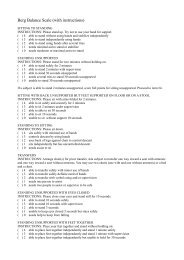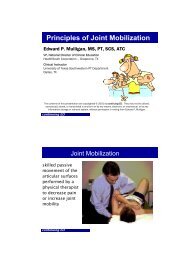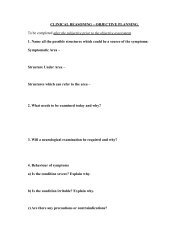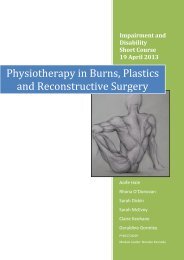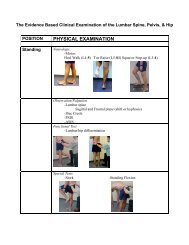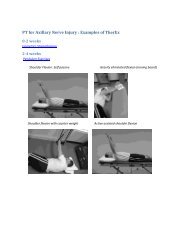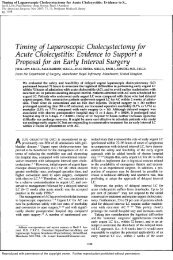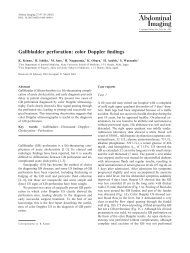Pes anserinus bursitis
Pes anserinus bursitis
Pes anserinus bursitis
You also want an ePaper? Increase the reach of your titles
YUMPU automatically turns print PDFs into web optimized ePapers that Google loves.
Clinical Bottom Line<br />
<strong>Pes</strong> anserine <strong>bursitis</strong> is commonly associated with osteoarthritis or/and overweight<br />
females. A typical characteristic is spontaneous anteromedial knee pain on climbing or<br />
descending stairs. The differential diagnosis is very encompassing. It doesn’t disappear<br />
without treatment such as rest, ice application, stretching and ultrasound. Another often<br />
used treatment is intrabursal injection of corticosteroids.<br />
References<br />
[1] J. Uson et al., 2000, <strong>Pes</strong> <strong>anserinus</strong> tendino-<strong>bursitis</strong>: What are we talking about?,Scan J Rheumatol<br />
(level of evidence = 3A)<br />
[2]Milton Helfenstein et al., 2010, Anserine syndrome, Escola Paulista de Medicina<br />
(level of evidence = 2A)<br />
[3]Ting-Wen Huang et al., 2003, Polyethylene-Induced <strong>Pes</strong> Anserinus Bursitis Mimicking an Infected<br />
Total Knee Arthroplasty<br />
(level of evidence = 3B)<br />
[4] W.J. Rennie et al., 2005, <strong>Pes</strong> anserine <strong>bursitis</strong>: incidence in symptomatic knees and clinical<br />
presentation.<br />
(level of evidence = 2A)<br />
[5] Mohamed K. Osman et al., 2011, Swelling Around a Child’s Knee<br />
(level of evidence = 3B)<br />
[6] Tammy White et al., 2009, Central States Orthopedic Specialists<br />
[7] http://emedicine.medscape.com/article/308694-clinical<br />
6



